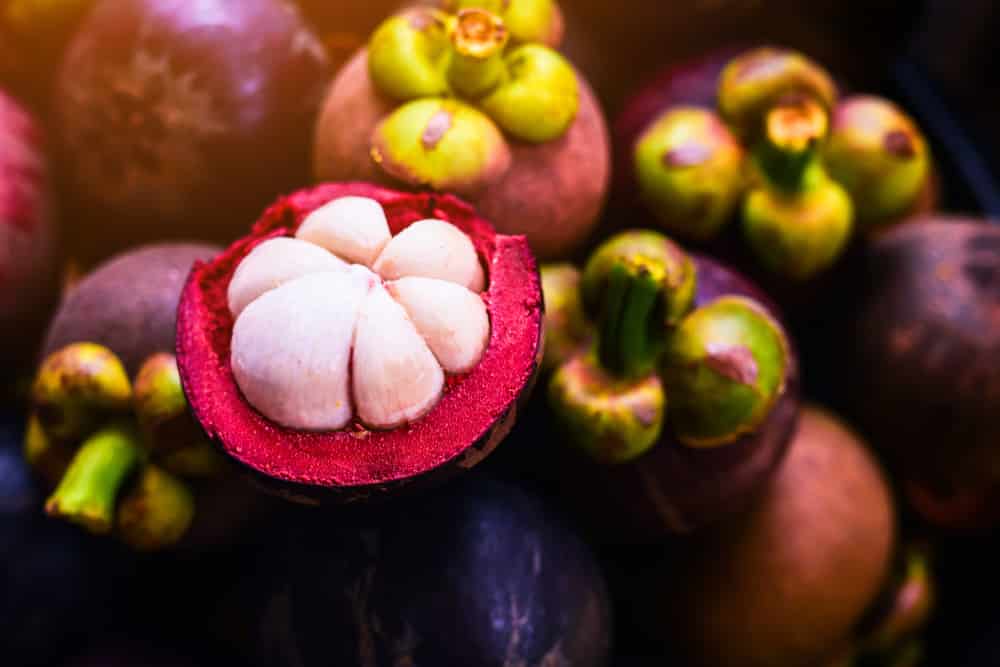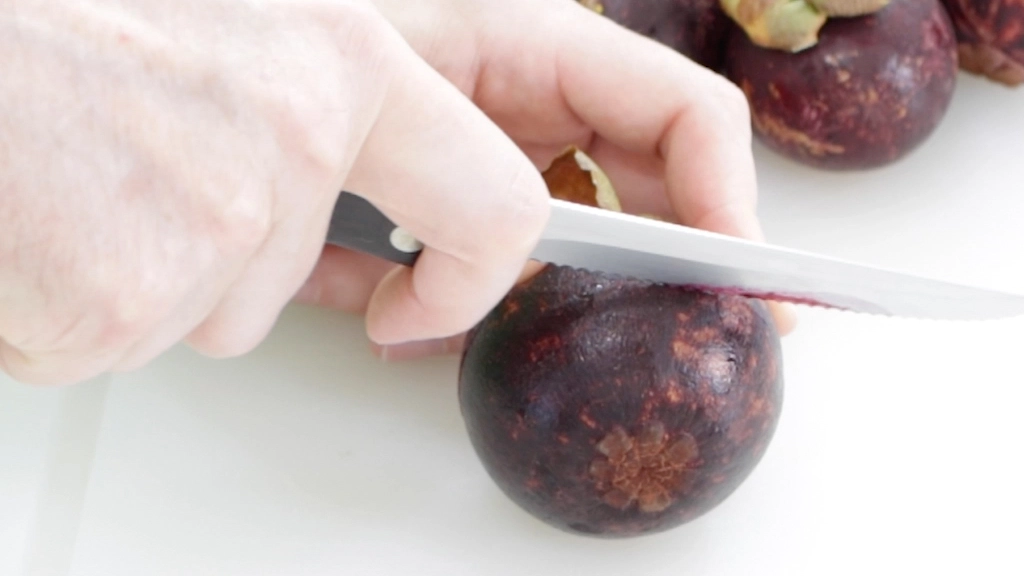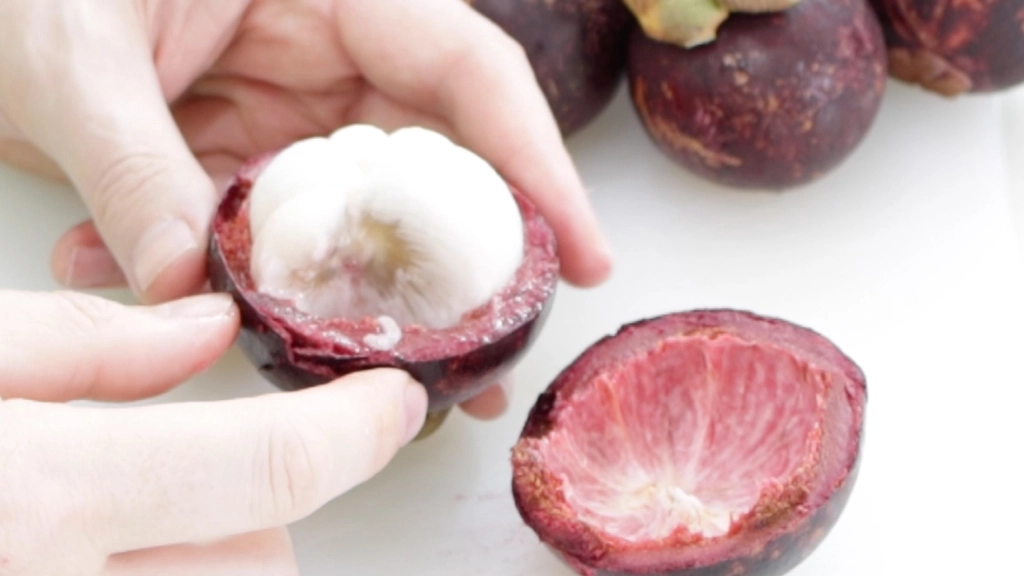You’ll know that a mangosteen is ripe when it feels a bit heavy in your hand, the outer peel is smooth, purplish red in color, and yields slightly with gentle pressure from your thumb. Unripened or over ripened mangosteen will be hard (like, knock-knock hard) on the outside and darker colored peel.

Where does Mangosteen come from?

The Mangosteen is native to the Islands around the Indian Ocean and Southeast Asia. They are widely cultivated in Malaysia, Borneo, Sumatra, Southwest India, and the Philippines among other countries in that region. And have been grown there for many hundreds of years.
In the mid-1800s the tropical fruit was introduced to the Western Hemisphere. The West Indies was one of the first places it was cultivated, with Jamaica being the main country. Later it spread to places like Puerto Rico, Mexico, Honduras, Guatemala, and they even grow in Florida.
They grow mainly in tropical climates. Here in the United States they can be hard to find and are very expensive, I have paid $17.99 a pound for them. I find them, when in season, at my local chain Asian Supermarket called HMart. During the summertime check your local Asian market and you may be lucky to find them.
Dubbed the “Queen of Fruit” in Southeast Asia, and I can see why. The Durian is nicknamed the “King of Fruit” however, I really think that title should belong to the Mangosteen, haha.
How to eat Mangosteen?

Mangosteens are pretty easy to cut open and eat, but it isn’t super intuitive just by looking at them. You can tell if it is ripe when it feels heavy for its size, is smooth and the skin is purple. Also, it will yield slightly to pressure when pressing the side.
Take a sharp knife, and score the fruit around its equator. A serrated blade seems to work well, but a sharp paring knife works great too. Don’t cut it too deeply only a little more than 1/8th of an inch.

Then you can squeeze it gently and it will crack easily along the cut then just pry it open in half. That white center is the flesh that you eat. The rind or skin is inedible, so throw it out, or compost it.
Another common method of opening it is called the compression method. You will put it in the palm of your hands and squeeze which will cause it to crack open. Then you just pry it open with your hands. That way is messier and doesn’t give you a clean opening, like using the knife.

To eat it, you can just grab the white flesh with your fingers and pop it in your mouth or use a spoon and scoop it out. You can also just take a bite out of it. There may be some small or larger seeds in it. The seeds are edible, but sometimes taste a little bitter.
I normally eat around any large seeds and just eat the really small seeds.
3 Easy Ways To Know When A Mangosteen Is Ripe! | Mornings With Ms.FitVegan!
FAQ
Are mangosteens supposed to be hard?
Does mangosteen ripen after picking?
How do you know if a mangosteen is ripe?
The stem and calyx should be dry and easily removable, and the aroma of the fruit should be sweet and fragrant. One of the most reliable methods for identifying a ripe mangosteen is to look for the tell-tale signs of a ripe fruit.
What are the disadvantages of eating ripe mangoes?
Eating ripe mangoes may not be as enjoyable as a mango at its peak ripeness. Overripe mangoes tend to be a little mushy and their flavor may be sweeter than is ideal. They are still safe to consume. Vitamin C content is much higher in the unripe fruit than in the ripened one.
What does ripe mangosteen smell like?
Unripe mangosteen and damaged fruit lack notable scent. A ripe specimen smells divinely floral with hints of peaches and strawberries. Let your nose guide you to that apple-peachy aroma for ultimate enjoyment. 6. Inspect the Stem Area Check where the mangosteen attached to the tree branch for ripeness clues.
How do you know if a mango is ripe?
Apply mild pressure with your thumb to check. If the middle gives a bit, that’s an excellent indicator of ripeness. An unripe fruit stays uniformly hard at all contact points. Seek out mangosteen with the slightest squish at center for ideal flavor. 4. Give It a Good Shake Here’s an easy test – hold the mangosteen up to your ear and shake lightly.
